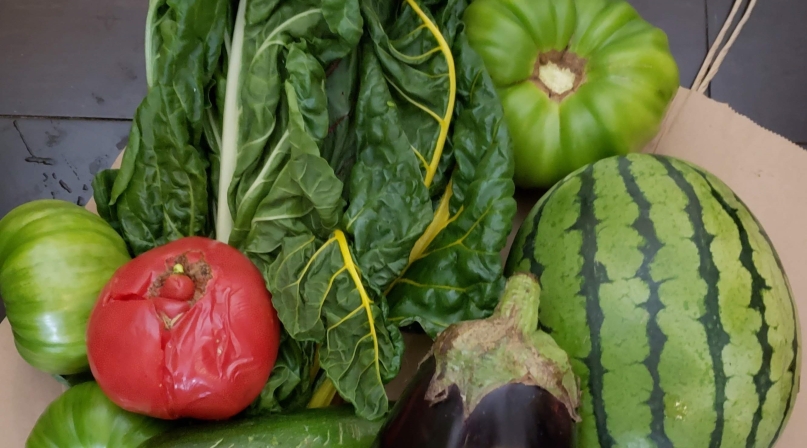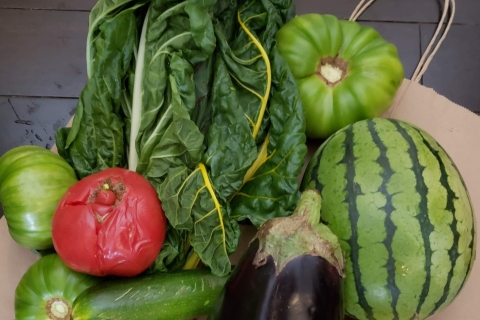Problem:
|
Supply chain disruptions at the beginning of the COVID-19 pandemic and consistent farmland loss negatively impact the agricultural economy.
|
Solution:
|
Create a website that promotes farming and connects consumers directly to locally grown food sources.
|
With just a few clicks of the mouse, those living in or near Erie County, N.Y. can find the closest producer of locally grown agricultural products.
The Erie County Office of Agriculture launched the Erie Grown website to promote local produce and encourage residents to purchase food from area farmers.
The office formed with the mission to address loss of farmland and improve the agricultural economy.
The Erie Grown website includes a site locator map and a produce finder with 145 producers. Users can search for a specific type of produce to find a location where they can make a purchase from a local grower.
“If you want to find who has apples in Erie County, you can do that,” said Sarah Gatti, senior planner with Erie County Environment and Planning.
Learn More
Check out the Erie Grown website
Erie County’s Erie Grown website is the recipient of a Best in Category 2021 NACo Achievement Award in the Community and Economic Development category
Users can search for farms or farm-related businesses or search for specific produce within a set distance from their location.
The website provides links to various farms’ websites or social media pages.
“It was in the hopes of just really better connecting the farmers and the consumer,” Gatti said.
The website features resources for producers including links to Local Harvest, MeatSuite, Farmland Relief Fund as well as a list of farmers markets throughout the state and other government and non-profit agencies that support farmers.
Gatti said the COVID-19 pandemic was a significant catalyst to launch Erie Grown, which was originally planned to be a downscaled version of what was created following the pandemic.
She said the pandemic caused supply chain disruptions that impacted grocery stores and left shelves empty while many local growers created food boxes to provide deliveries or curbside pickup for customers.
Prior to the pandemic, she said outreach to farmers often proved challenging.
“But after the pandemic hit, I was in touch with those people who were kind of in crisis mode,” she said.
Over 145 farms, farmers markets, wineries and cideries have enrolled in the Erie Grown website.
At last count, the website had over 50,000 views. The website also includes information for farms in other counties to connect residents to neighboring communities.
“We added the other counties because agriculture doesn’t respect county boundaries,” she said. “A farmer may and probably does own land in Erie County and then our neighboring counties.”
The site was developed and built by the county’s Department of Information Support Services and the Office of Geographic Information Systems, which created the mapping features.
In addition to Erie Grown, the county launched the Erie Grown Passport to further incentivize local purchasing.
Through the program, those who visited local producers had a chance to win agriculture-related prizes.
“We hope it incentivizes people to visit the Erie Grown website, but more importantly to visit our local farmers,” Gatti said.
The passport program encourages consumers to purchase produce from different farmers and post about it on social media.
The Office of Agriculture also began planning for the passport program before the COVID-19 pandemic but launched a modified version to eliminate points of contact. The program now includes QR codes on posters and postcards where individuals self-report visits to local growers instead of marking physical passports.
Individuals can visit a site, fill out the online passport or printable brochure and turn them in. The individual with the most passport points won a prize.
Gatti said she used existing networks to encourage farmers to sign up for the website through email blasts and organizations in the community. There were more than 40 enrollments the first day the website launched.
The Erie Grown website was also expanded to allow restaurants to search for farms and growers that have local meats and produce.
Gatti advised counties to partner with agricultural agencies that have relationships with farmers to increase their involvement with the county and local community.
“I think that trust in those long-standing relationships go a long way in getting farmers on board with something like this,” she said.





